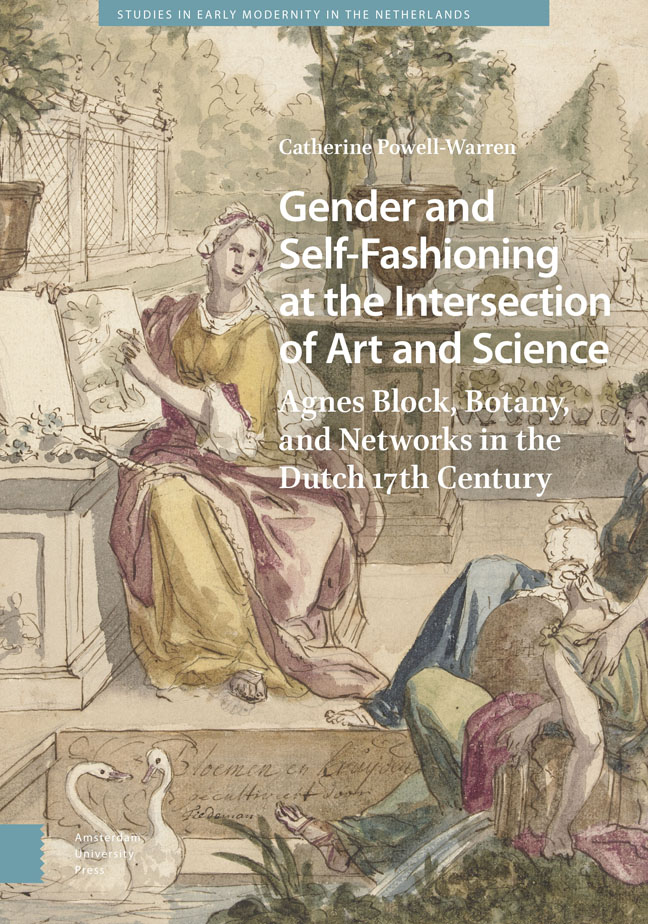 Gender and Self-Fashioning at the Intersection of Art and Science
Gender and Self-Fashioning at the Intersection of Art and Science Published online by Cambridge University Press: 20 February 2024
Abstract: This chapter “reconstructs” Agnes Block’s country estate Vijverhof based on literary and visual evidence, surviving documentation, visual clues offered by contemporary estates located along the Vecht, and principles of Dutch garden design. A literary analysis of Gualtherus Blok’s poem Vyver-Hof van Agneta Blok, as well as a close examination of the iconographies contained in works commissioned by Block from Jan Weenix, Philip Tidemann, Jan Goeree, and Jan Boskam, establish the centrality of Vijverhof in Block’s identity and self-representation. Although seemingly inconsistent with the modesty preached by Mennonites, Block’s lavish spending on and devotion to Vijverhof was not uncommon amongst her peers in that community; it also accorded with the broad, generally accepted link between devotion to God and devotion to nature.
Keywords: garden culture; self-fashioning; country estates; hofdichten; Dutch garden design; Mennonites and nature
From the moment she acquired it in 1670, Vijverhof became an inextricable part of Block’s identity. Without Vijverhof, there would have been no Flora Batava, no collection of watercolours. Vijverhof is where Block planted seeds and nurtured fragile bulbs, welcomed international botanical experts and amateurs, hosted artists who immortalized her vast collection of rare plants and flowers. Vijverhof was also the backdrop, whether realistic or idealized, of Block’s portraits by Jan Weenix (fig. 1), Adriaen van der Werff (fig. 17), and Johannes Thopas (fig. 21), and of the portrait medal cast by Jan Boskam (fig. 7). Block’s last act of self-fashioning and attempt at posterity was the commission of a poem in 1702 by her cousin Gualtherus Blok, entitled Vyver-Hof van Agneta Blok; she was, in every sense, the creator of the estate and of all it meant.
The aim of this chapter is to present and “recreate” Vijverhof and to understand the essential place the estate assumed in Block’s self-fashioning and in her identity. This “reconstruction” of Vijverhof is hypothetical and proceeds based upon what little visual and literary evidence survives, combined with information about other country estates along the Vecht to provide important context and fill informational gaps. The objective is simply to provide a sense of what the estate might have looked like, and of what it might have constituted. Creating this mental image helps to put into perspective the level of devotion Vijverhof required on the part of Block, and to understand how intertwined the estate and her identity came to be.
To save this book to your Kindle, first ensure [email protected] is added to your Approved Personal Document E-mail List under your Personal Document Settings on the Manage Your Content and Devices page of your Amazon account. Then enter the ‘name’ part of your Kindle email address below. Find out more about saving to your Kindle.
Note you can select to save to either the @free.kindle.com or @kindle.com variations. ‘@free.kindle.com’ emails are free but can only be saved to your device when it is connected to wi-fi. ‘@kindle.com’ emails can be delivered even when you are not connected to wi-fi, but note that service fees apply.
Find out more about the Kindle Personal Document Service.
To save content items to your account, please confirm that you agree to abide by our usage policies. If this is the first time you use this feature, you will be asked to authorise Cambridge Core to connect with your account. Find out more about saving content to Dropbox.
To save content items to your account, please confirm that you agree to abide by our usage policies. If this is the first time you use this feature, you will be asked to authorise Cambridge Core to connect with your account. Find out more about saving content to Google Drive.